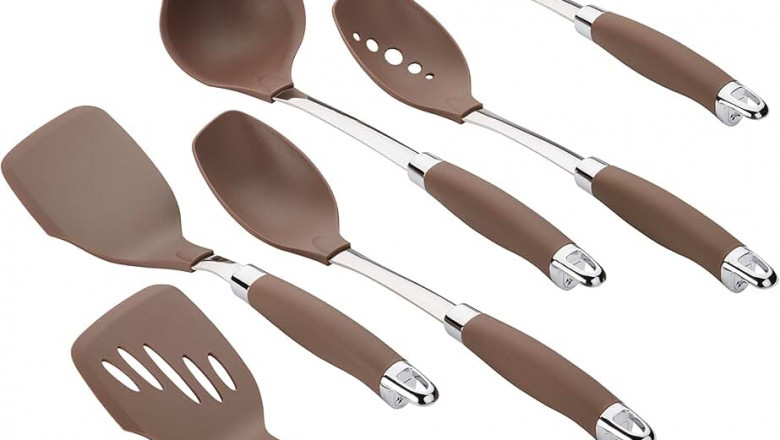views
Nylon cooking utensils are popular in many kitchens. They are lightweight, affordable, and gentle on non-stick cookware. But many people wonder, is nylon safe for cooking at high temperatures? Let’s dive into the facts.
Why Nylon Utensils Are So Popular
Nylon utensils are highly valued for their flexibility and ease of use. They don’t scratch delicate surfaces and come in various shapes and sizes. Whether you are flipping pancakes or stirring soups, nylon tools seem convenient. Plus, they are budget-friendly compared to metal or silicone alternatives.
However, the primary concern arises when these utensils are exposed to high heat. Understanding the safety risks is essential if you frequently cook at elevated temperatures.
The Heat Resistance of Nylon
Nylon utensils generally withstand temperatures up to 400°F (204°C). Beyond this point, they can start to melt or warp. The biggest issue comes when they come into direct contact with hot surfaces like frying pans or grills. Even if they do not visibly melt, they may release harmful chemicals.
So, is nylon safe for cooking when heat exceeds 400°F? Not quite. If the utensil begins to degrade, it can leach substances into your food. This situation can pose health risks, especially during prolonged cooking sessions.
Possible Health Concerns
When nylon utensils are overheated, they may release compounds like plasticizers and additives. These substances are known to disrupt endocrine functions and may even be linked to certain health conditions. Furthermore, broken or degraded nylon pieces may end up in your food, posing a choking hazard.
Some studies suggest that prolonged exposure to high-heat nylon can result in the migration of harmful substances. While more research is needed, it’s crucial to minimize the risk by avoiding high-heat cooking with nylon tools.
Safer Alternatives to Nylon Utensils
If you often cook at high temperatures, consider using materials that are more heat-resistant. Here are a few safe alternatives:
-
Silicone Utensils: These can withstand temperatures up to 500°F (260°C) without degrading.
-
Stainless Steel: Ideal for frying and grilling, resistant to high heat and easy to clean.
-
Wooden Utensils: Gentle on non-stick pans and heat resistant to a reasonable extent.
Switching to safer options not only protects your food but also helps maintain kitchen safety.
How to Safely Use Nylon Utensils
If you prefer nylon utensils for their convenience, here are some tips to reduce risks:
-
Avoid High-Heat Cooking: Stick to low and medium temperatures.
-
Inspect Regularly: Check for signs of wear and tear, especially melting or warping.
-
Replace Damaged Tools: If any utensil shows signs of degradation, replace it immediately.
-
Follow Manufacturer Guidelines: Always check the maximum heat rating for each tool.
Final Thoughts: Is Nylon Safe for Cooking?
While nylon utensils are practical and affordable, they are not suitable for high-heat cooking. Always check temperature ratings and avoid exposing them to direct heat. Safer alternatives like silicone or stainless steel are preferable when cooking at high temperatures.
To answer the question directly—is nylon safe for cooking? Yes, but only when used properly and at recommended temperatures. Being cautious can protect your health and ensure safer meals.






















Comments
0 comment